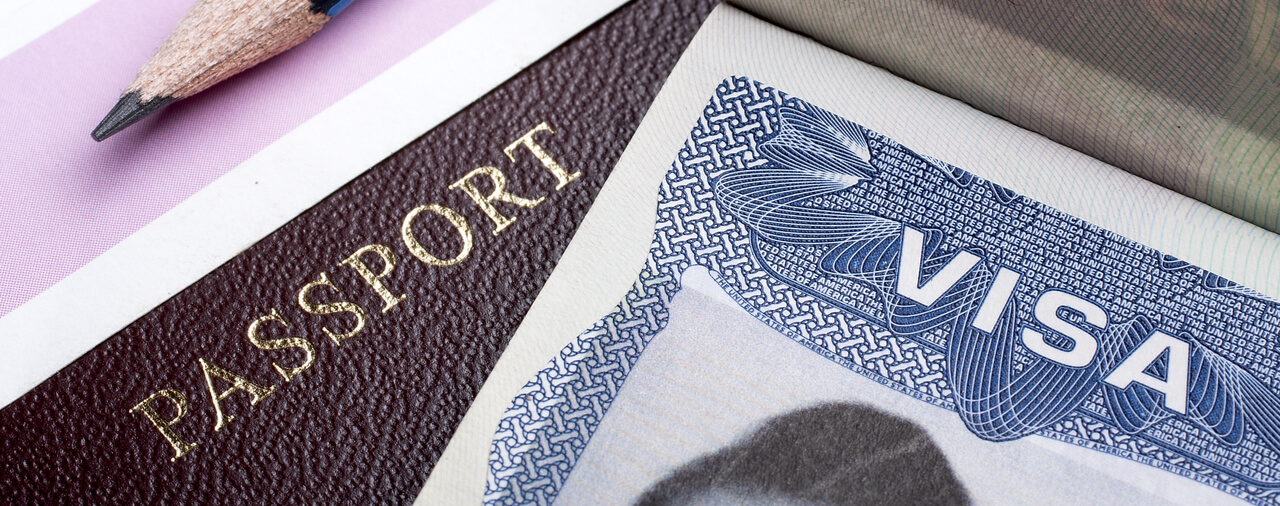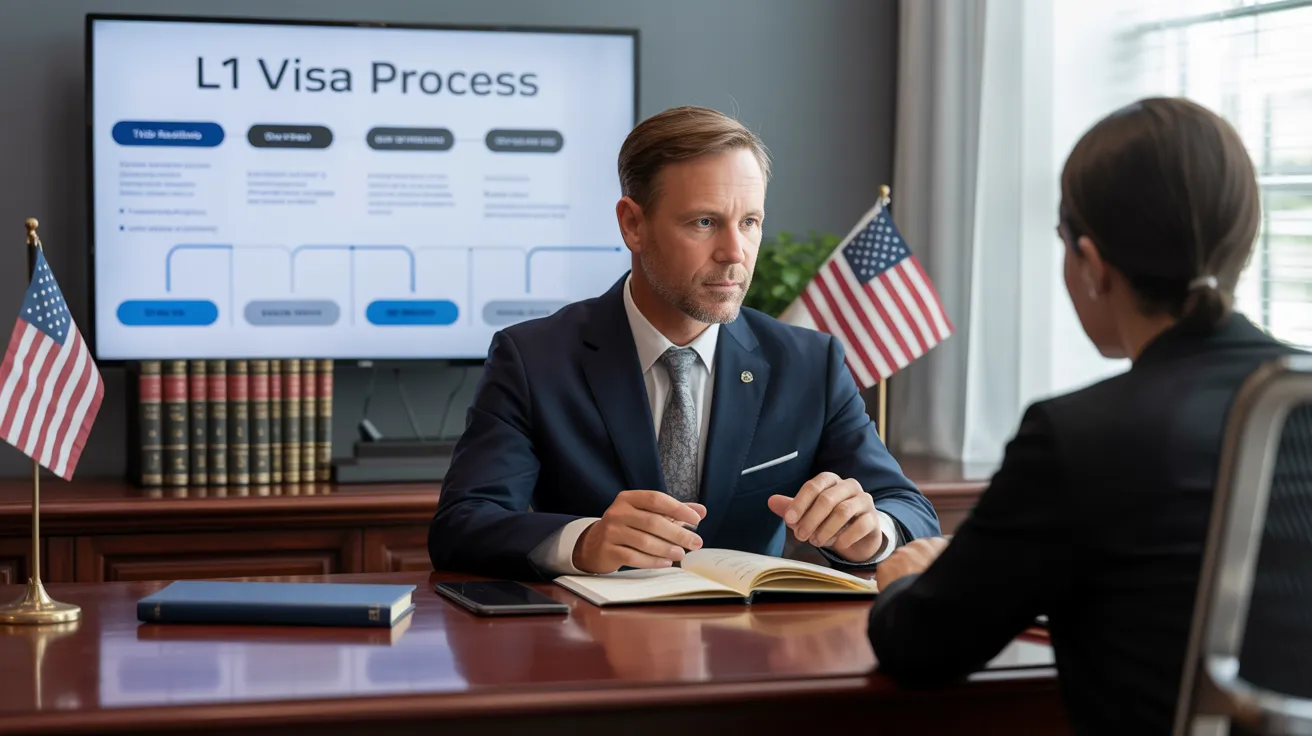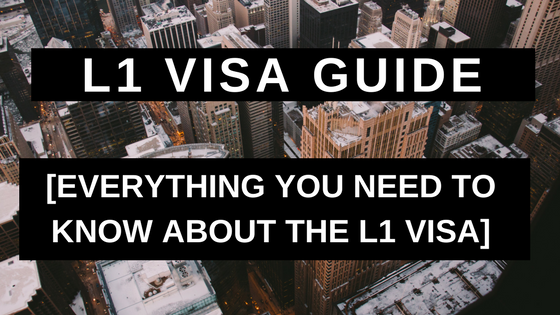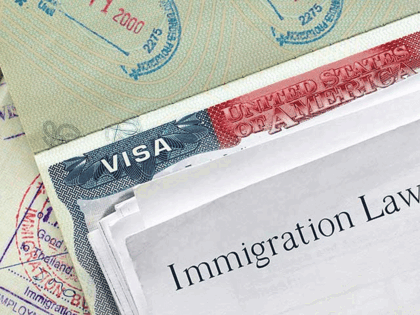Opening Opportunities: A Comprehensive Guide to the L1 Visa Process
The L1 visa procedure offers a critical pathway for multinational firms seeking to transfer key employees throughout boundaries. Understanding the subtleties of eligibility requirements, the differences in between L-1A and L-1B visas, and the details of the application process can substantially affect a candidate's success. Maneuvering this complex landscape is not without its difficulties, and cautious interest to paperwork and company sponsorship is essential. As we discover the key parts of this procedure, the approaches for getting rid of prospective obstacles will certainly come to be apparent, disclosing how educated preparation can open a world of possibilities.
Understanding the L1 Visa
Comprehending the L1 visa requires acknowledging its relevance as a vital tool for multinational business seeking to move experienced workers in between international workplaces. This non-immigrant visa category assists in the motion of execs, supervisors, and specialized expertise employees to the United States, therefore making it possible for companies to maintain functional continuity and harness global skill efficiently. The L1 visa is divided right into two main classifications: L-1A for managers and executives, and L-1B for staff members having specialized knowledge.The L1 visa serves an essential function in boosting a company's one-upmanship in the global marketplace - L1 Visa. By permitting companies to relocate their key personnel, organizations can assure that essential jobs are handled by qualified individuals who are currently acquainted with the company's society and functional processes. This interior transfer mechanism not just promotes understanding sharing but also advertises advancement and cooperation across borders.Moreover, the L1 visa is usually preferred for its relatively simple application procedure contrasted to other visa classifications, as it enables twin intent, allowing holders to seek long-term residency while on a short-term job visa. This function makes the L1 visa particularly appealing for both employers and employees, as it improves the pathway for competent professionals to establish lasting residency in the USA
Eligibility Standards
Eligibility for the L1 visa depends upon numerous key standards that assure both the employee and the employer satisfy details qualifications. This non-immigrant visa is created for international business to move staff members from consular services to united state counterparts.Firstly, the employer should be a certifying company, that includes a moms and dad business, branch, associate, or subsidiary of a united state organization. The firm must have been doing organization for at the very least one year both in the united state and abroad. This guarantees that the company has adequate functional security and a reputable presence.Secondly, the employee should hold a managerial, exec, or specialized knowledge placement. For L1A visas, the applicant needs to demonstrate supervisory or executive certifications, while L1B visas concentrate on specialized understanding relevant to the company's products, services, or procedures. Additionally, the worker has to have worked for the international entity for at the very least one continual year within the last three years before their application.Lastly, the employee's function in the U.S. have to align with their previous setting, making sure that their abilities and know-how are leveraged for the business's advantage.
Kinds Of L1 Visas
The L1 visa group consists of 2 key types designed to promote the transfer of workers within international business: the L1A visa for supervisors and execs, and the L1B visa for employees with specialized expertise. Each kind serves distinctive purposes and has details eligibility criteria.The L1A visa is tailored for people that hold supervisory or executive settings within a business. This visa allows top-level workers to transfer to a united state branch, subsidiary, or associate of the same company. Candidates for the L1A visa need to demonstrate that they have been used in a managerial or executive ability for at the very least one constant year within the past 3 years before their application. Additionally, this visa uses a longer period of remain, at first given for 3 years, with the possibility of expansions for as much as 7 years.In comparison, the L1B visa is meant for professionals with specialized expertise pertaining to the firm's items, services, or processes. To certify, applicants must confirm that their experience is essential to the organization and that they have actually benefited at the very least one continual year within the last three years in a role that needed this specialized knowledge. The L1B visa is at first provided for 3 years, with extensions offered for up to five years.Both visa kinds are crucial for business seeking to enhance their global procedures by leveraging proficient personnel, therefore promoting development and effectiveness within the U.S. market.
Application Process
Steering via the L1 copyright procedure involves several crucial steps that should be meticulously complied with to ensure a successful result. The procedure starts with the united state company, that need to first develop eligibility by demonstrating a qualifying connection with the foreign entity and confirming that the worker fulfills the certain requirements for the L1 visa classification being sought.Once eligibility is confirmed, the company launches the procedure by filing Kind I-129, the Application for a Nonimmigrant Employee, with the U.S. Citizenship and Immigration Provider (USCIS) This kind must be accompanied by a comprehensive description of the task obligations to be executed, the organizational framework of both the united state and foreign entities, and the staff member's credentials. It's essential to verify that all info is exact and full, as omissions or mistakes can bring about delays or denials.Upon approval of the I-129 application, the following action involves the staff member making an application for the L1 visa at a united state consular office or consular office in their home nation. This phase requires the conclusion of Kind DS-160, the Online Nonimmigrant copyright, and setting up an interview. During the meeting, the candidate should offer evidence sustaining their certifications and the employer's petition.After the visa is given, the employee can get in the USA to work in the assigned duty. In general, careful preparation and adherence to each action of the application process are crucial for an effective L1 visa outcome.
Needed Paperwork

Crucial Forms Required
Navigating the L1 Visa procedure requires careful attention to the essential forms and paperwork required for an effective application. The main kind required is the Form I-129, Request for a Nonimmigrant Employee, which must be finished and sent by the U.S. company. This form lays out the details of the work offer and the qualifications of the staff member looking for the L1 Visa.Alongside Form I-129, the applicant will need to total Form I-539 if going along with relative are also making an application for visas. Additionally, the employer has to offer evidence of the certifying partnership in between the U.S. entity and the foreign entity, frequently necessitating the L1 copyright copyright submission of company papers such as posts of consolidation or monetary statements.Moreover, it is important to consist of the L Classification Supplement to Type I-129, which specifies the sort of L Visa being asked for-- either L-1A for supervisors and execs or L-1B for employees with specialized understanding. Candidates need to assure that all kinds are authorized and dated properly, as insufficient entries can lead to delays or rejections. Correctly setting up these vital forms lays the structure for a smoother L1 copyright process.

Supporting Evidence Needs
Sustaining documentation is necessary for an effective L1 copyright, as it confirms the cases made in the application. Candidates have to provide a variety of documents to demonstrate eligibility for the visa, which is classified into two main kinds: evidence of the qualifying connection between the U.S. and international entities and proof of the candidate's qualifications.To establish the connection, applicants need to send paperwork such as corporate business charts, monetary statements, and evidence of ownership. These papers confirm that the international firm has a certifying partnership with the U.S. employer, whether as a moms and dad business, subsidiary, branch, or affiliate.For the applicant's credentials, crucial papers include a comprehensive employment letter from the foreign company, outlining the applicant's task title, obligations, and duration of employment. Furthermore, instructional credentials, such as levels and diplomas, need to be given to verify the candidate's competence in the appropriate field.
Company Sponsorship Records

Usual Obstacles
Steering the L1 visa procedure presents a number of usual challenges that candidates must understand. Key issues commonly include stringent documents requirements, potential hold-ups in processing times, and the need for rigorous legal conformity. Comprehending these obstacles can aid candidates better prepare and mitigate threats throughout their copyright journey.
Documentation Demands
The L1 copyright procedure typically offers considerable challenges associated to paperwork needs. Candidates have to give considerable documents to establish qualification, which can result in confusion and prospective delays. Key records consist of evidence of a qualifying partnership in between the united state and international employer, evidence of the applicant's work background, and comprehensive information concerning the work role in the U.S.One common obstacle is gathering adequate proof to demonstrate the nature of the qualifying connection. Business frequently have a hard time to existing clear organizational graphes or monetary declarations that show the link between the entities. On top of that, making certain that letters of assistance from companies properly show the candidate's job obligations and certifications is important, as vague summaries can lead to denials.Another concern arises from the demand for thorough work summaries that align with the L1 visa categories. Applicants need to express not just their current role but additionally their supervisory or specialized expertise responsibilities clearly. This necessitates a complete understanding of both the applicant's setting and the regulatory language used in L1 applications.
Processing Time Delays
Experiencing delays in processing times is an usual obstacle dealt with by L1 visa candidates, commonly leading to aggravation and uncertainty. Several aspects add to these delays, consisting of high application volumes, boosted scrutiny of applications, and management stockpiles within the U.S. Citizenship and Immigration Solutions (USCIS) Candidates may locate that handling times can differ greatly relying on the solution center managing their application, as each center has its very own workload and performance degrees. Furthermore, the complexity of the candidate's case, such as the need for considerable documentation or clarification, can better prolong wait times.In some instances, concerns associated with the applicant's existing migration condition or previous visa background might likewise lead to additional hold-ups, as USCIS might require more review or information. It is crucial for prospects to continue to be positive throughout this period, preserving open communication with their employers and lawful representatives to deal with any kind of possible problems promptly.Understanding these processing time obstacles can aid L1 visa applicants get ready for possible delays and reduce the effect on their change and career strategies. Persistence and persistance are necessary merits in steering this intricate process.
Lawful Conformity Issues
Many L1 visa applicants experience legal compliance problems that can complicate their journey toward acquiring the visa. Recognizing and adhering to the certain regulations set by the U.S. Citizenship and Immigration Solutions (USCIS) is important. Common challenges include demonstrating the qualifying relationship between the foreign and U.S. companies, as well as proving that the applicant has the requisite specialized knowledge or supervisory capacity.Additionally, applicants must provide extensive documents outlining their job tasks, business structure, and monetary stability of the united state entity. Insufficient or incorrect documents can lead to hold-ups or perhaps denials. Companies have to likewise ensure that they adhere to labor regulations, consisting of wage and functioning condition standards, which can influence visa eligibility.Another typical issue entails maintaining conformity with the regards to the visa as soon as provided. Modifications in employment standing, task obligations, or business framework can require amendments to the visa, which otherwise attended to promptly can lead to lawful issues. Consequently, staying informed concerning conformity demands and seeking legal advise when required is necessary to navigate the complexities of the L1 visa process effectively.
Tips for Success
Success in the L1 copyright process typically pivots on thorough preparation and interest to detail. To improve your chances of authorization, start by completely recognizing the eligibility requirements for both the L1A and L1B visa classifications. Evaluate whether your setting at the company certifies as supervisory, executive, or specialized understanding, as this classification notably impacts your application.Next, gather extensive paperwork that confirms your claims. This includes business charts, thorough task summaries, and evidence of the company's operational structure. Clear and succinct proof of the certifying relationship between the U.S. entity and the foreign entity is crucial. Validate that all records are organized realistically and presented in a professional manner, as this shows your commitment and seriousness regarding the application.Engage the solutions of a seasoned migration attorney that specializes in L1 visas. Their expertise can show invaluable, assisting you via facility laws and assuring that all documentation abides by present laws. Additionally, plan for the meeting by exercising answers to common concerns and preparing to discuss your role and payments to the company detailed.
Frequently Asked Inquiries
Can Household Members Accompany the L1 Visa Holder?
Yes, relative of L1 visa holders, including spouses and single kids under 21, can go along with the primary visa owner. They might likewise look for L2 visas, which permit them to live in the United States.
The Length Of Time Can I Remain on an L1 Visa?
The L1 visa enables initial keeps of as much as three years, with the opportunity of extension. L1A visa holders may stay for an optimum of 7 years, while L1B visa holders can stay for five years.
Can L1 Visa Holders Request a Permit?
Yes, L1 visa owners can make an application for a permit. L1 Visa Requirements. They may pursue irreversible residency with employment-based categories, usually requiring sponsorship from their company, provided they satisfy the required certifications and documents needs
What Takes place if My L1 copyright Is Denied?
If your L1 copyright is refuted, you might get a notification outlining the factors for rejection. You can seek to appeal the choice, reapply, or explore different visa options based on your situations.
Exist Any Type Of Travel Restrictions With an L1 Visa?
An L1 visa normally permits international travel; nonetheless, re-entry to the U. L1 Visa Requirements.S. rests upon maintaining valid condition. Tourists must guarantee conformity with visa problems to prevent difficulties upon return
Verdict
